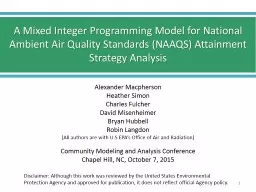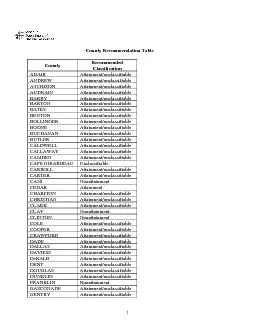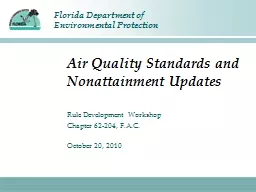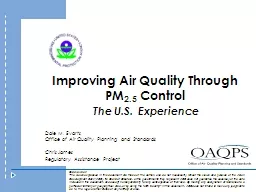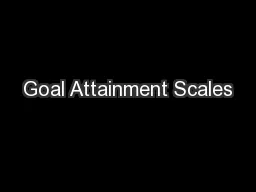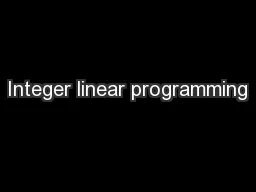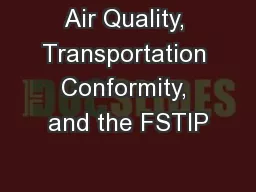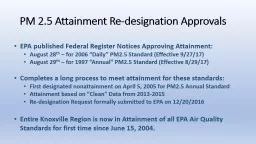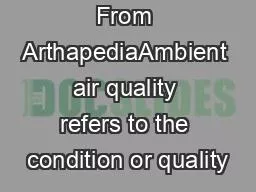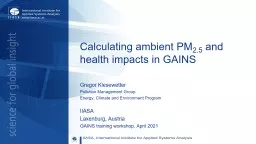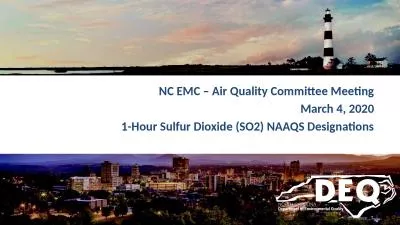PPT-A Mixed Integer Programming Model for National Ambient Air Quality Standards (NAAQS) Attainment
Author : bikershomemaker | Published Date : 2020-08-06
Alexander Macpherson Heather Simon Charles Fulcher David Misenheimer Bryan Hubbell Robin Langdon All authors are with US EPAs Office of Air and Radiation Community
Presentation Embed Code
Download Presentation
Download Presentation The PPT/PDF document "A Mixed Integer Programming Model for Na..." is the property of its rightful owner. Permission is granted to download and print the materials on this website for personal, non-commercial use only, and to display it on your personal computer provided you do not modify the materials and that you retain all copyright notices contained in the materials. By downloading content from our website, you accept the terms of this agreement.
A Mixed Integer Programming Model for National Ambient Air Quality Standards (NAAQS) Attainment: Transcript
Download Rules Of Document
"A Mixed Integer Programming Model for National Ambient Air Quality Standards (NAAQS) Attainment"The content belongs to its owner. You may download and print it for personal use, without modification, and keep all copyright notices. By downloading, you agree to these terms.
Related Documents

